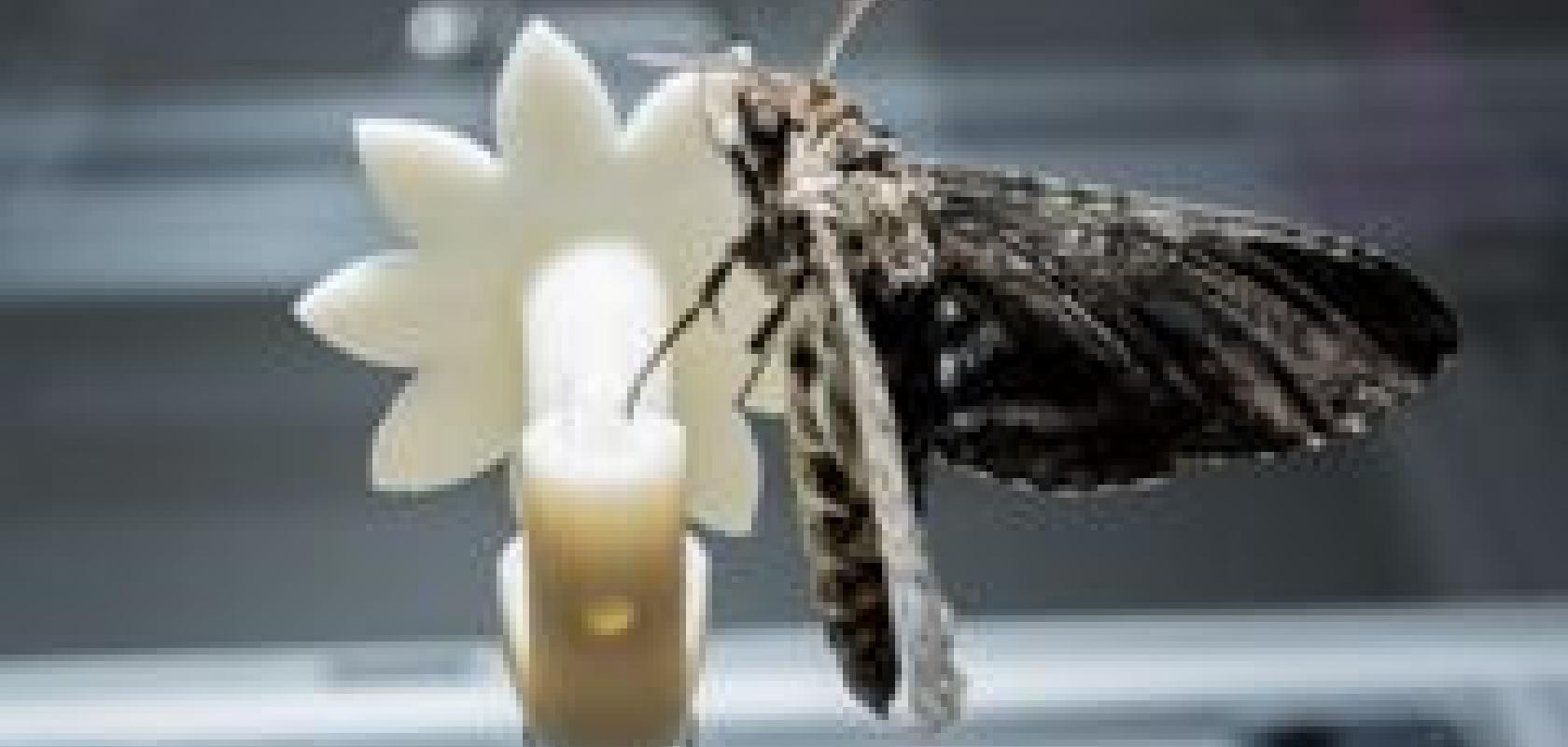Scientists from the Georgia Institute of Technology in America have used high-speed infrared cameras and 3D-printed robotic flowers to understand how a moth overcomes complex sensing and control challenges when searching for food.
Reported in the June issue of Science, the research could help the next generation of unmanned aerial vehicles (UAVs) operate efficiently under a broader range of lighting conditions.
In order to feed from the nectar of its favourite flowers, the hummingbird-sized hawkmoth (Manduca sexta) must hover in mid-air while tracking a flower moving in the wind; all while adjusting to changing light conditions.
‘There has been a lot of interest in understanding how animals deal with challenging sensing environments, especially when they are also doing difficult tasks like hovering in mid-air,’ said Simon Sponberg, an assistant professor at Gerogia Tech. ‘This is also a very significant challenge for micro air vehicles.’
Sponberg and colleagues at the University of Washington used high-speed infrared cameras and nectar-dispensing robotic flowers that could be moved from side-to-side at different rates. While varying both the light conditions and the frequency at which the flowers moved, the researchers studied how well free-flying moths kept their tongues – known as proboscises – in the flowers.
‘We expected to see a tradeoff with the moths doing significantly worse at tracking flowers in low light conditions,’ said Sponberg. ‘What we saw was that while the moths did slow down, that only made a difference if the flower was moving rapidly – faster than they actually move in nature.’
In the experiments, the moths tracked robotic flowers that were oscillating at rates of up to 20Hz – twenty oscillations per second − which is considerably faster than the 2Hz maximum rate observed in real flowers. Because the moth’s wings beat at a rate of about 25 strokes per second, they had to adjust their direction of movement with nearly every wingstroke – a major sensing, computational and control accomplishment.
‘To manoeuvre like this is really quite challenging. It’s an extreme behaviour from both a sensory and motor control perspective,’ said Sponberg.
In the natural world, light intensity varies 10 billion-fold from noon on a sunny day to midnight on a cloudy evening. Operating in that range of luminosity is a challenge for both moths and the sensors on human-engineered systems. Understanding how natural systems adjust to this range of conditions could therefore have broader benefits.
‘If we want to have robots or machine vision systems that are working under this broad range of conditions, understanding how these moths function under these varying light conditions would be very useful,’ Sponberg said.
Further information


